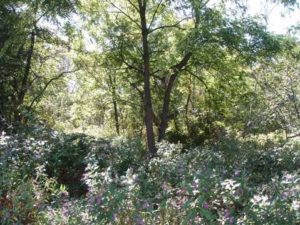
BRICK MAKING IN NEWMARKET
Stickwood’s brick yard was on the north side of 5rigley Street, just east of the creek. the site has recently been sold to a developer, and soon another land¬mark in the history of Newmarket will remain but a memory. This was the comment in the Newmarket Era back in the early 1990’s.
For fifty years the old Stickwood farm house which stood on the site of the present day Prince Charles School, and the Stickwood brickyard were a hive of industry in our town.
The men who worked in the brick for six or seven months each year spent the winter months cutting wood in the hardwood bush which covered the area on both sides of the third concession just east of the Srigley and Stickwood properties. The men obtained room and board in the huge farmhouse eating at a long table in the oak timbered dining room with a huge fireplace at one end. Several servant girls under the supervision of Mrs. Stickwood prepared and served all the meals. Here also they baked all their own bread and pastry and cured their own pork. They also did the laundry, probably using their own home made soap.
Mrs. William Walker (nee_FrancisStickwood} / great grand-daughter of Isaac Stickwood, who has contributed part of the information in this article, tells me that she never has purchased bed or table linen in her lifetime, so much having remained from seventy years ago.
During the winter months the men not only ouk.hardwood on the Srigley farm for making bricks, but they also cut and delivered hardwood to the railway station for use in the wood burning steam engines of the day. One hundred cords per winter were contracted for with the railway. They also hauled to the station all barrels of flour made in the J.W. Marsden Flour Mill, which stood on the site of the Office Specialty Co. Ltd.
Issac Stickwood, his wife and family came to America from Cambridgeshire, England by sailing ship in the spring of 1857, landing in New York. They came to Toronto by way of Albany. He spent two years working at the Davisville Brick Yard and then moved to Newmarket, where he purchased the Srigley Street property. He made his first kiln of bricks in 1860 and continued until 1871, when he turned the business over to his eldest son William, 141.3 carried on the business until 1886 when he purchased the Stickwood farm at Bogarttown where his grand-daughter Mrs. Wm. Walker now lives. The brick yard was taken over by a younger brother Charles Stickwood in 1890, who carried on the business until the Autumn of 1917 when the decision was made to close the brickyard due to the scarcity of hardwood for firing the kilns; and also probably due to the competition from the coke fired kilns in Toronto.
At first the brick were made by hand, one at a time. Later improved machinery was purchased enabling the brickyard to turn out thousands of bricks, so that practically all of the brick buildings, houses, stores, schools and churches built in Newmarket and district from 1860 to 1910 were built with Stickwood brick.
